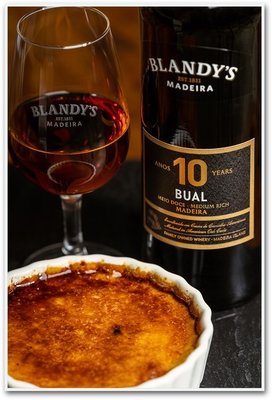HOW TO SERVE PORT
Ports bottled with a T-Cap cork will not benefit from additional aging and are best consumed upon purchase. Extended cellaring is not necessary.
- These Ports can be served at room temperature, but Tawny Ports are best enjoyed slightly chilled (55°F to 58°F ) where as young Ruby Ports are best enjoyed slightly below room temperature (60°F to 64°F).
- Due to their contact with oxygen during their time in barrel, Tawny Ports can remain fresh for months upon opening while young Ruby Ports, with a slightly shorter time in barrel, will remain fresh for six to eight weeks.
Ports with a driven cork (primarily Vintage Ports) are bottled young and unfiltered and are intended for extended aging in bottle.
- Vintage Ports are best served slightly below room temperature: 60°F to 64°F. Too cool (e.g. straight from the cellar) and the wine will not release all its aromas and flavors, too warm (68°F or more) and it may appear unbalanced on the nose. If you are thinking of all the literary allusions to warming Port by the fire, remember that up until the mid-20th century or later, houses were not centrally heated and could be as cold or colder than modern cellar temperature recommendations.
- After being opened, a Vintage Port should ideally be enjoyed within a day or two. Younger wines Older wines, more than 40 years, tend to be more fragile and are likely to lose their freshness and complexity after a relatively short period of time so they should be enjoyed upon opening.
Decanting
A simple guideline:
Open and decant vintages less than 40 years old two to three hours before drinking. For most of us, intending to drink our vintage ports after a meal, that means opening the bottle and decanting it before we sit down to dinner. Regarding wines older than 40 years, decant them 30 minutes to an hour before serving.
Decanting process:
- Let the bottle stand upright 10 to 15 minutes if it’s less than 40 years old, and up to 30 minutes if it’s older.
- Pour the wine gently into a decanter and stop pouring when you see sediment moving into the bottle neck.
- Optionally, you may pour through a funnel lined with a piece of muslin. Avoid filters that have been bleached, as these can impart undesirable flavors to the wine.
- If you wish to serve from the original bottle, ensure you rinse the bottle well in order to remove all sediment before returning the wine.
- Relax and enjoy your Vintage Port.

|
Decanting Vintage Port |
Glassware
The pleasure of Port comes in large measure from being able to sense its lovely aromas. Avoid serving port in small cordial glasses, and instead serve in an 8-10oz white wine glass or traditional port glass, which will allow you to swirl and aerate the wine in the glass so that the aromas and color can be fully appreciated. Additionally, before you serve your Port, be sure your glasses have no lingering odors as they will interfere with the aromas of the wine.
Enjoying
Traditionally, Port is passed clockwise around the table. There are several explanations for this, one of which is that this gesture was seen as a sign of peace to the person sitting on the left because, by pouring a glass of Port with the right hand, the server wouldn’t be able to draw a sword or revolver. A much more practical reason is that the majority of people are right-handed, making it easier to pour the wine with the right hand and pass it with the left. Tradition also has it that the bottle should be kept in circulation and not set down again until it has returned to the host.
Port wine is all about pleasure. Pairing you Port with the right foods will enhance your tasting experience. A young to mature full-bodied and fruit-driven Vintage Port is well paired with dark chocolate or with a strong blue cheese, such as a Stilton. Older, more elegant and nuanced Vintage Ports need no accompaniment and should be savored without the distraction of other foods.
HOW TO SERVE MADEIRA
 The majority of wines are all bottled ready to be drunk. Younger Madeiras along with the 5, 10 and 15 years of age wines are all bottled when ready for drinking and will not improve by further ageing; although they will remain in perfect condition for considerable periods if left unopened. Decanting is not necessary.
The majority of wines are all bottled ready to be drunk. Younger Madeiras along with the 5, 10 and 15 years of age wines are all bottled when ready for drinking and will not improve by further ageing; although they will remain in perfect condition for considerable periods if left unopened. Decanting is not necessary.
Vintage Madeira should be decanted. A general rule is to open the wine one day for every 10 years that the wine has been in bottle. Use a good cork screw, or if the cork seems fragile use a 'butlers thief' to ease the cork out of the bottle.
When it comes to enjoying Madeira, we suggest that the dry and medium dry styles be served chilled (54°F) and the medium rich and rich styles be served slightly chilled (61°F).
The glassware is important we suggest that all Madeiras should be enjoyed using a typical port glass.
"What is a typical port glass?"
The International Organization for Standardization has a specified dimensions for a wine-tasting glass. The opening is narrower than the convex part so as to concentrate the bouquet. The capacity is approximately 215 ml, but it is intended to take a 50 ml pour.



